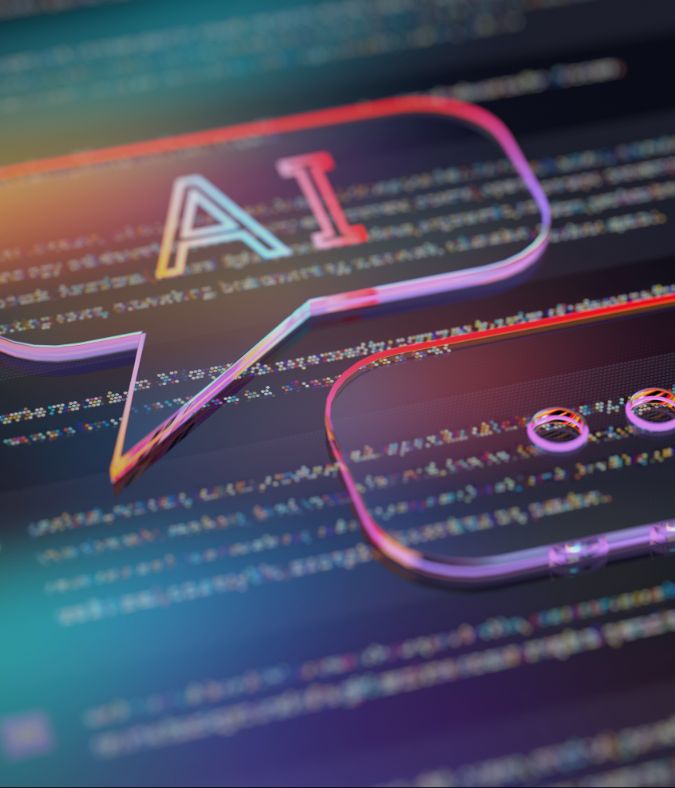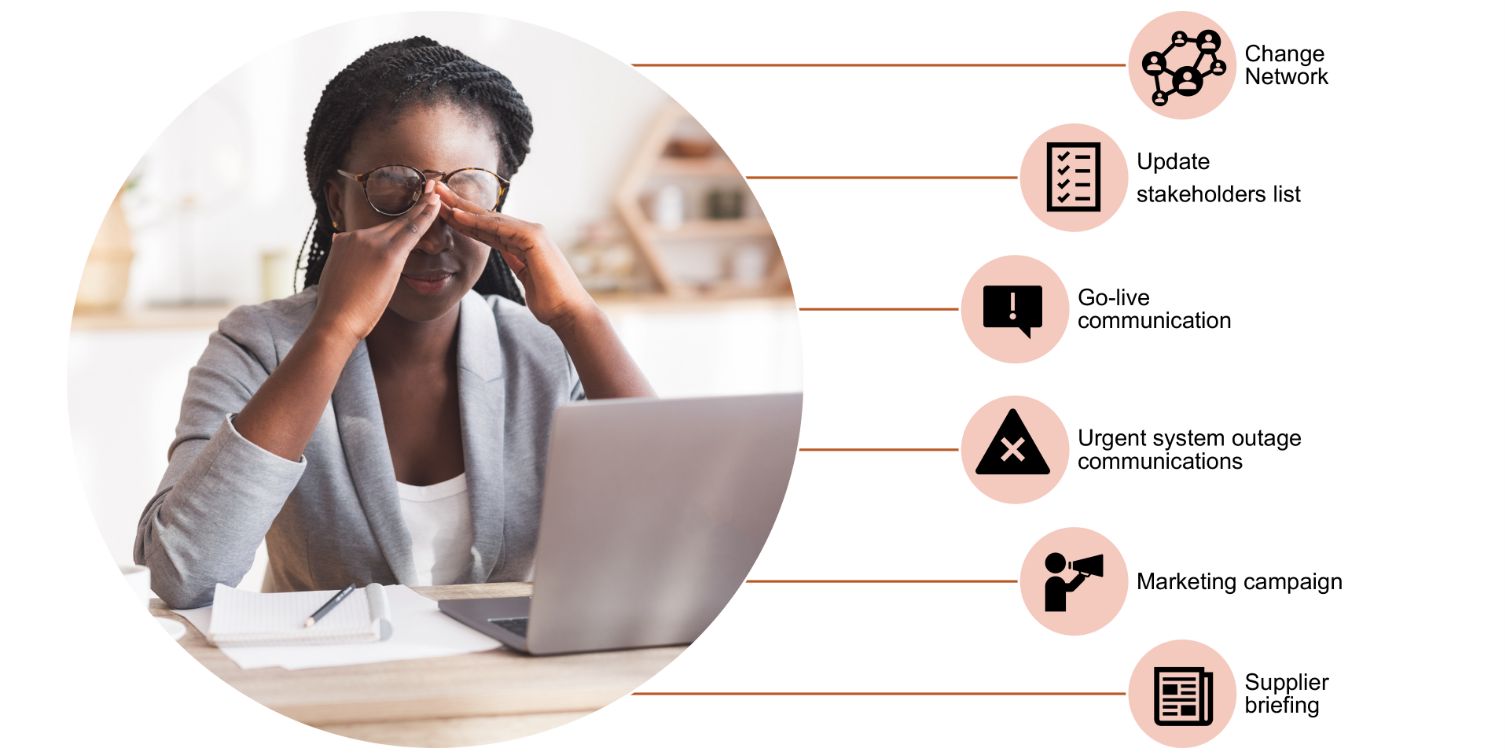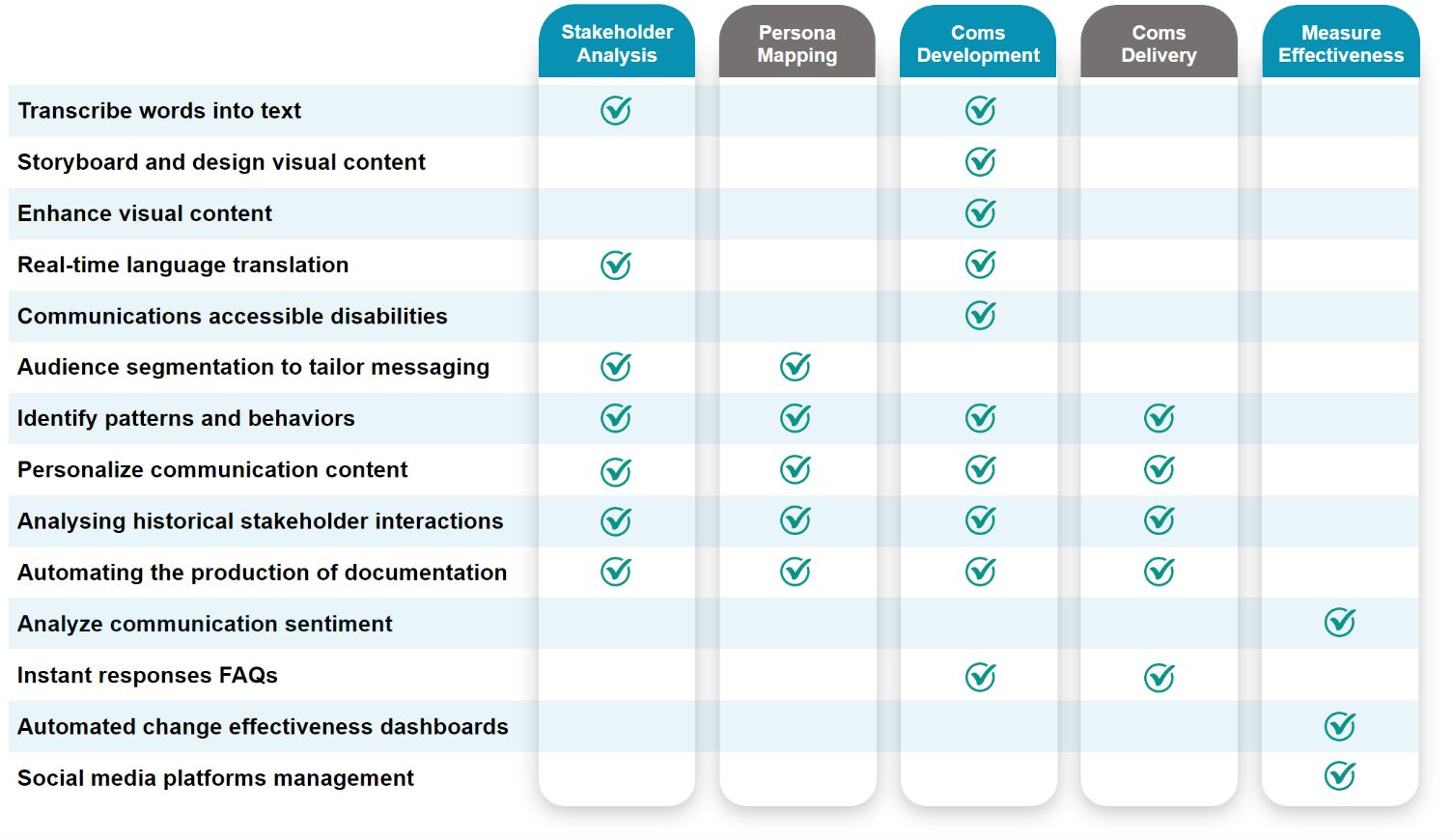By automating specific processes and providing valuable insights, GenAI can augment the role of change communication professionals and elevate their impact within organizations. In particular, GenAI can already play a significant role in accelerating communications development, fostering inclusivity and accessibility, and ensuring consistency in messaging and design.
A recent study conducted at Wipro revealed that change practitioners spend 31% of their time on communication development. This persistent manual workload underscores the potential impact that emerging GenAI technologies can have on the efficiency and effectiveness of change practitioners, freeing up valuable time for more high-value activities including advisory.
Communications Development
With GenAI's automation and assistance, developing communication materials can be significantly expedited. Tasks such as content creation, editing, and target audience segmentation can be streamlined. This allows communication professionals to save time and focus on more strategic activities, such as exploring user personas, meeting individually with key stakeholders, and evangelizing the change across company forums.
Wipro’s AscendAI framework recently demonstrated GenAI's power to accelerate communications for a prominent FTS 250 company in the UK. Working with the client, the Wipro Talent & Change team delivered a “case for change”. Traditionally, a seasoned consultant invests 25 hours in this endeavour. Enter AI: a digital alchemist that condenses the same process into a mere 2 hours. This 92% time savings for a single change communications task underscores the potential for human expertise to harmonize with AI’s computational capabilities.
However, it is worth noting that not all GenAI foundation models perform equally well in communications development. In comparing GenAI models across numerous attributes (understanding of prompts, rationale clarity, word count compliance, response structure, tone suitability, scenario interpretation, etc.), Wipro’s Talent & Change team has encountered numerous differences across models. In our experience, some models overemphasized the shortcomings of current practices, while others delivered overly long responses or lacked coherence. This emphasizes the need for human oversight even if the model provides a strong starting point. Careful testing, or collaboration with change partners experienced with GenAI, can enable organizations to identify the optimal model for their use cases, and outcomes can be further enhanced through prompt engineering. Clear and specific prompts will guide GenAI models toward generating accurate, engaging, and persuasive content.
Inclusivity and Accessibility
In addition to simply developing content, GenAI-powered tools can help ensure communication materials are accessible to a broader audience. By incorporating features like language translation, voice assistants, and text-to-speech capabilities, communication professionals can effectively reach diverse audiences with change-related messages and promote inclusivity.
Fostering inclusivity and accessibility is a strategic imperative. AI-powered language translation tools, for example, can dissolve the linguistic barriers that all global enterprises face, enabling instantaneous, democratized change communication. In conjunction with GenAI, natural language processing (NLP) algorithms can also scrutinize written communication for bias, advocating for language that embraces everyone and avoiding language that might strike the wrong note with particular communities. Capabilities like GenAI-enabled captioning, for example, will improve the speed and accuracy of captioning even in highly technical contexts, allowing employees with hearing differences to be more fully included in the conversation. By integrating these AI-infused inclusive technologies, businesses are opening the doors to diversity.
Consistency in Messaging and Design
With the assistance of GenAI, communication professionals can ensure that their messages are aligned and visually appealing across different platforms. GenAI-powered tools can provide templates, style guides, and real-time feedback to help maintain a cohesive brand image for the change effort.
Maintaining consistent tone, voice, and messaging across marketing efforts reinforces brand identity and facilitates customer connection and recall. As these GenAI sentinels advance, they will become indispensable in safeguarding the integrity and continuity of change communications.
The GenAI Future of Change Communications
GenAI's impact will go far beyond content development and execution (see figure below). It will also play a role in areas like stakeholder analysis, persona mapping, and measuring effectiveness.






